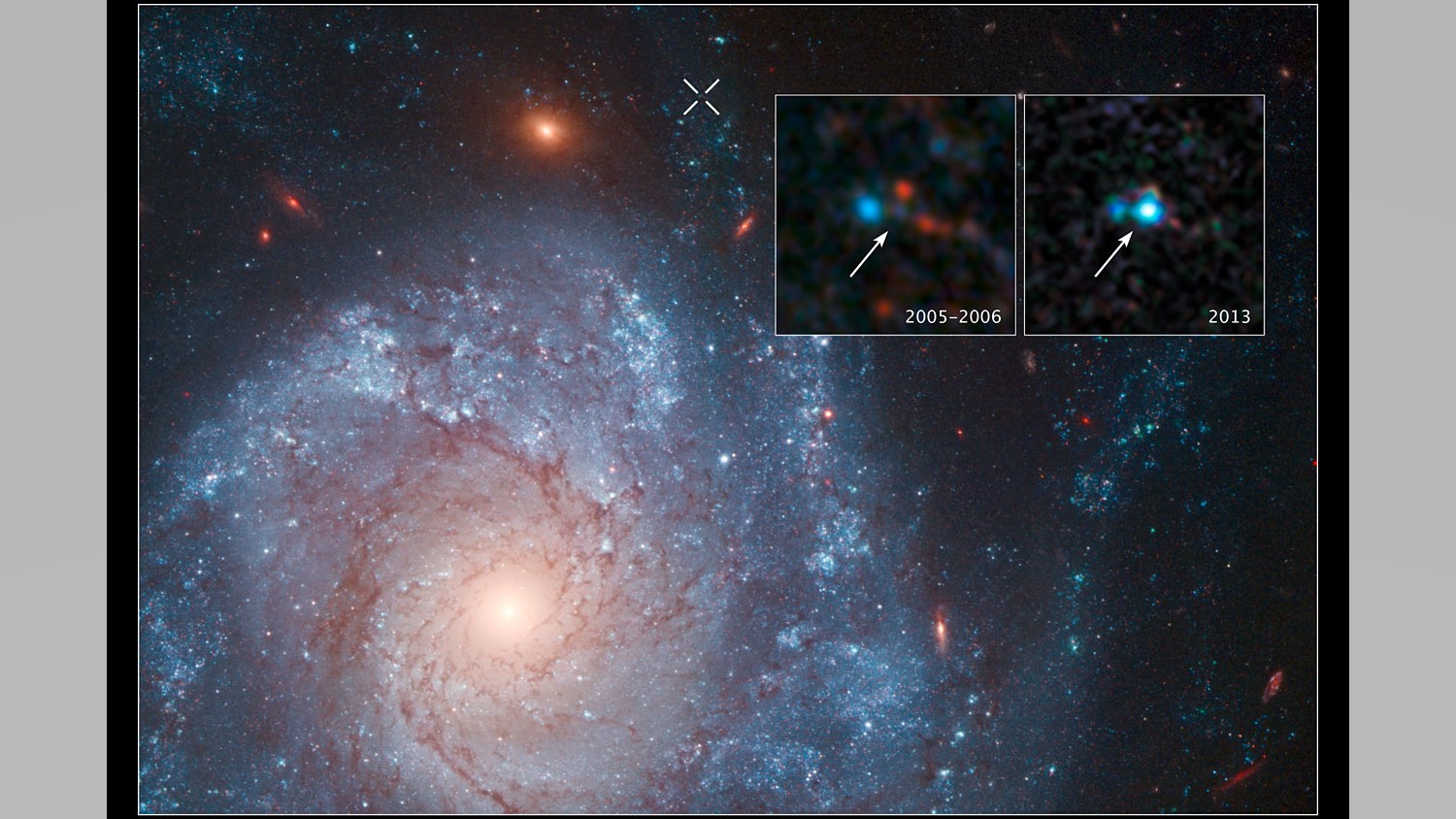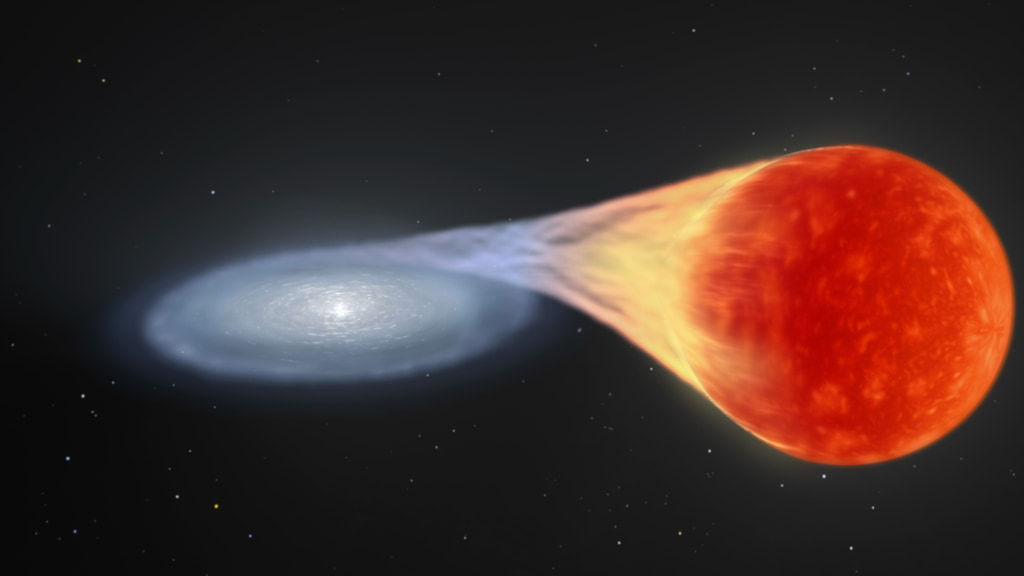White dwarf seen to survive its own supernova explosion
Rumors of the star's death were greatly exaggerated.

Astronomers have spotted a white dwarf that miraculously survived its own thermonuclear detonation, raising questions over how and why these stars create supernovas.
A white dwarf is the evolutionary endpoint of a sun-like star. After such a star swells to become a red giant, then runs out of the fuel required for nuclear fusion reactions, the star ejects its outer layers to form a planetary nebula, or a shell of diffuse gas. As the nebula expands and dissipates, it leaves behind the star's inert core, which is what we call a white dwarf.
White dwarfs are only about the size of Earth, but they contain a mass equivalent to that of a star. As such, they are dense objects with gravity strong enough to pull material from any close orbiting companion stars. This material flows onto the white dwarf, and once enough material has built up, it explodes in a thermonuclear detonation that usually destroys the star in what scientists call a Type Ia supernovas.
Or so we thought.
Related: Supernova photos: Great images of star explosions
In 2012, when astronomers saw a supernova dubbed 2012Z explode in the face-on spiral galaxy NGC 1309, which is about 120 million light-years away from Earth in the constellation Eridanus, the Hubble Space Telescope was quickly on the scene. Hubble had imaged NGC 1309 many times in the years prior to the supernova, and astronomers were able to identify the progenitor star system that exploded, finding that it contained a white dwarf snatching material off an aged, helium-rich star, perhaps a red giant.
These observations marked the first time that scientists had ever imaged the progenitor of a Type Ia supernova. Yet, something seemed wrong in the Hubble data.i Not only did the images show that the progenitor had somehow survived the explosion, but the white dwarf was also somehow even more luminous than before.
Get the Space.com Newsletter
Breaking space news, the latest updates on rocket launches, skywatching events and more!
"Nobody was expecting to see a surviving star that was brighter," Curtis McCully, an astrophysicist at the Las Cumbres Observatory headquartered in California, said in a statement. "That was a real puzzle."
Astronomers have identified what they suspect are failed Type Ia supernovas that leave behind remnant 'zombie' stars — a phenomenon termed Type Iax supernovas. One of the most notable such supernovas was SN 2008ha, which exploded in the galaxy UGC 12682 about 69 million light-years away from Earth in the constellation of Pegasus. However, SN 2012Z is the first time that astronomers have confirmed that the exploding star survived, based on the images taken both before and after the supernova.
McCully and his colleagues, having studied SN 2012Z, have a partial theory about what happened. The researchers suggest that the thermonuclear explosion was not powerful enough to blow the white dwarf completely apart, and that much of the debris fell back onto the star, puffing the white dwarf up as it became what astronomers call a 'bound remnant.' Over time, the scientists expect the star to return to its original quiescent state.

The surviving white dwarf might be shining brighter than before because of light from a number of sources, including the glowing bound remnant itself, the shock-heated companion star that received the brunt of the explosive blast, and the radioactive decay of material that did escape into space during the explosion.
Usually, the light of a Type Ia supernova is powered by the radioactive decay of cobalt-56 and -57 isotopes in the material blown out into space. (Isotopes are varieties of an atom that have the same number of protons and electrons but different numbers of neutrons.) These isotopes have half-lives of 77 and 271 days respectively, so after a few years, most of the cobalt has decayed and the light of the supernova drastically fades.
However, SN 2012Z has been fading much more slowly, so if radioactive decay is the primary source of light, it must be an isotope with a much longer half-life. McCully's team suggest iron-55, which has a half-life of 2.7 years.
Why SN 2012Z underwent this failed supernova, rather than destroying itself in a typical Type Ia, remains a mystery.
"The implications for Type Ia supernovas are profound," said McCully. "We've found that supernovas at least can grow to the limit and explode. Yet the explosions are weak, at least some of the time. Now we need to understand what makes a supernova fail and become a Type Iax, and what makes one successful as a Type Ia."
Type Ia supernovas have a standardizable change in their brightness over time — what astronomers call a light curve — that makes determining their distance that much easier. As such, they've become crucial in studies of cosmic expansion and dark energy. By better understanding how they explode, astronomers will be able to measure the expansion of the universe and the strength of dark energy to even greater accuracy than before.
The findings were published on Feb. 1 in The Astrophysical Journal.
Follow Keith Cooper on Twitter @21stCenturySETI. Follow us on Twitter @Spacedotcom and on Facebook.
Join our Space Forums to keep talking space on the latest missions, night sky and more! And if you have a news tip, correction or comment, let us know at: community@space.com.

Keith Cooper is a freelance science journalist and editor in the United Kingdom, and has a degree in physics and astrophysics from the University of Manchester. He's the author of "The Contact Paradox: Challenging Our Assumptions in the Search for Extraterrestrial Intelligence" (Bloomsbury Sigma, 2020) and has written articles on astronomy, space, physics and astrobiology for a multitude of magazines and websites.









